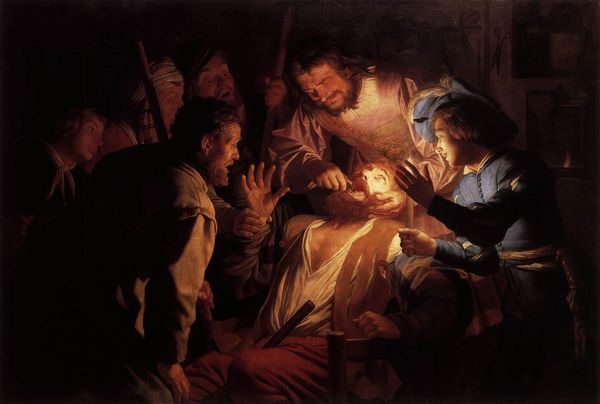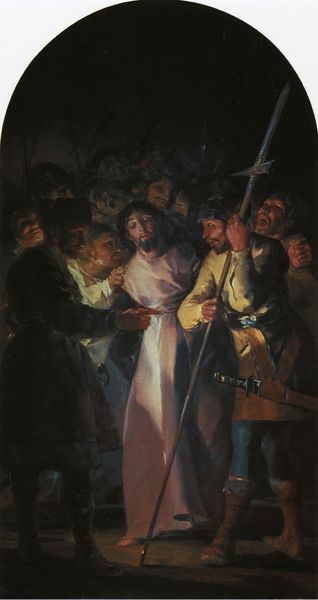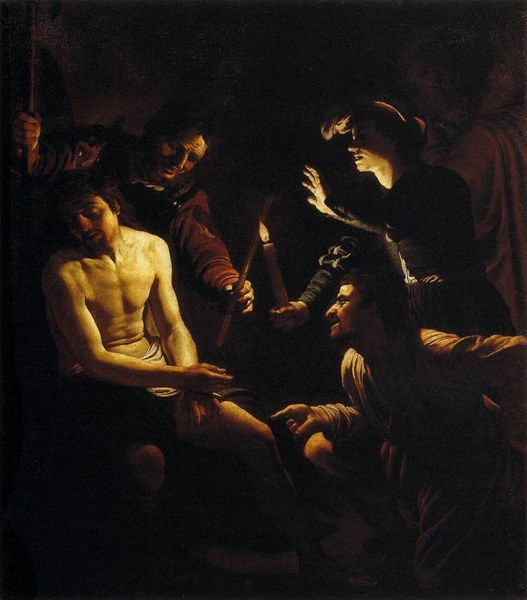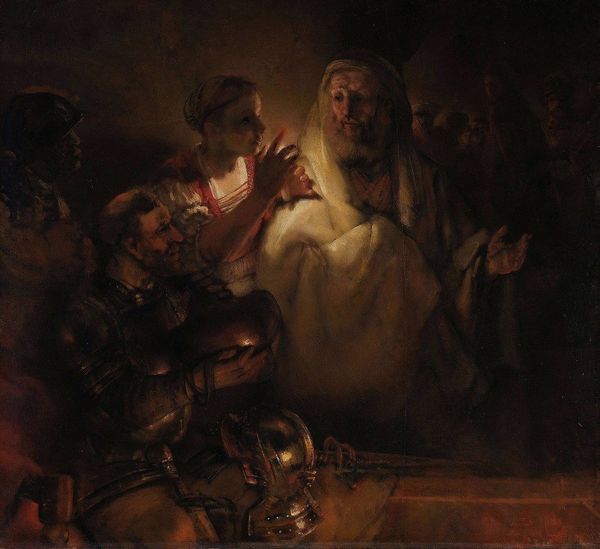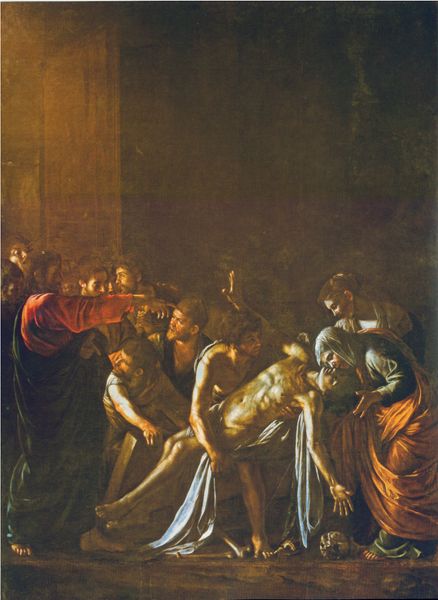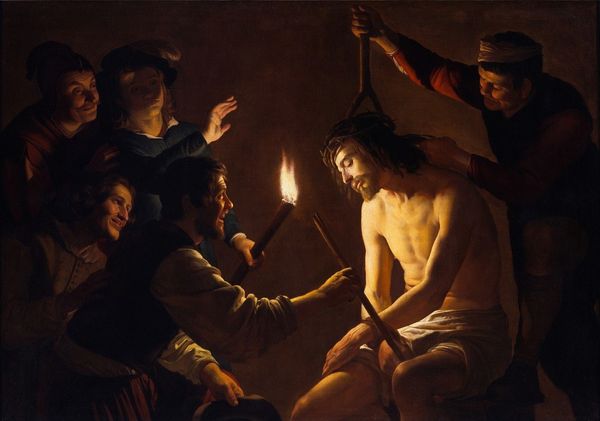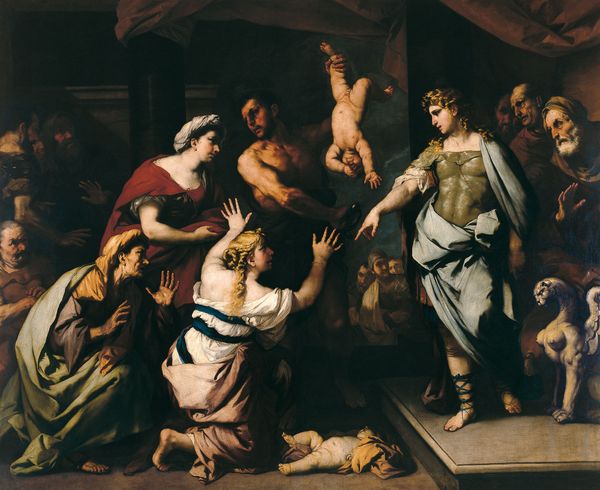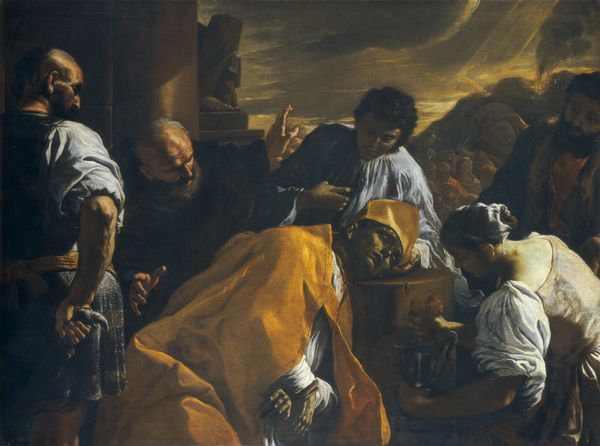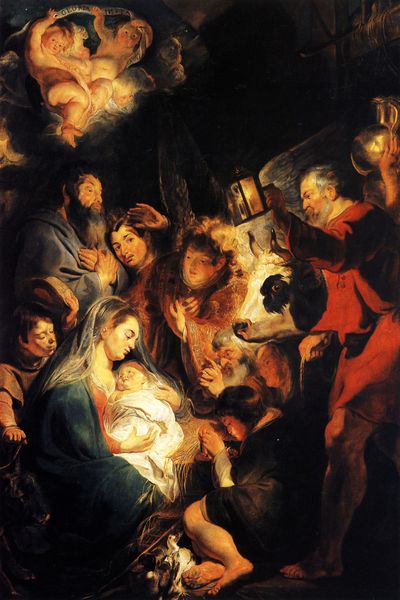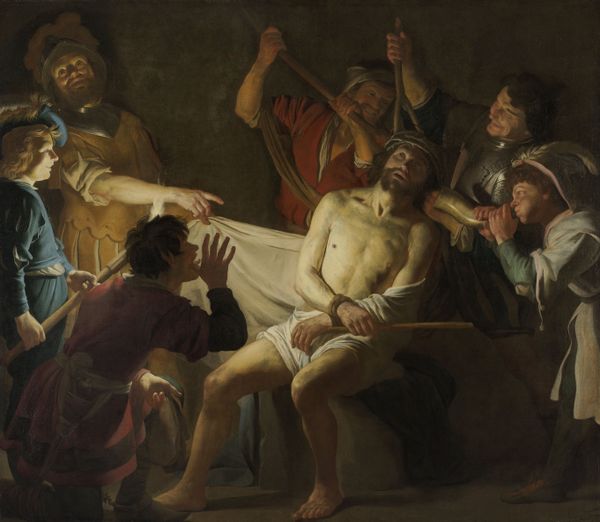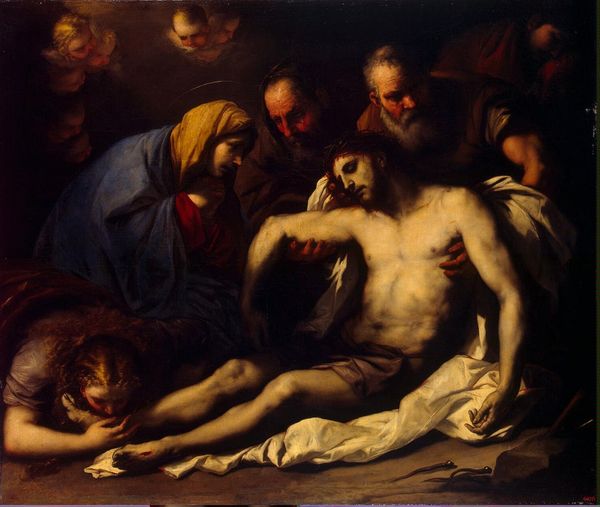
painting, oil-paint
#
portrait
#
baroque
#
painting
#
oil-paint
#
figuration
#
chiaroscuro
#
history-painting
Copyright: Public domain
Editor: This painting is Gerard van Honthorst’s "The Denial of Saint Peter," created around 1620 using oil paints. The single candle in an otherwise dark scene really sets a dramatic and tense mood. What strikes you most when you look at this piece? Curator: For me, it's the power of that darkness you mention. Honthorst wasn't just playing with light, he was actively engaging in a political and religious conversation. Remember the context: this is the Dutch Golden Age, a time of religious upheaval. Editor: Oh, right, the Reformation! Curator: Exactly! So, what does it *mean* to depict a Biblical scene with such blatant theatricality, in this moment? This dramatic use of *chiaroscuro*, made popular by Caravaggio, isn't merely stylistic. Editor: It feels like… he's pulling us, the viewers, into this conspiratorial huddle. Making us complicit. Curator: Precisely! And think about where paintings like this would have been displayed – likely in wealthy homes, reinforcing a specific kind of piety and moral reflection. Was this meant to incite public virtue? And did the buyers even perceive this moral aspect of this "history painting"? Editor: That is, by confronting Peter’s fallibility, one confronts their own? The interplay between religious subject matter and political messages makes me appreciate the cultural role artworks play in reflecting values. Curator: Exactly. It prompts you to look at your current world with such awareness, always questioning the visual messaging within culture.
Comments
No comments
Be the first to comment and join the conversation on the ultimate creative platform.
